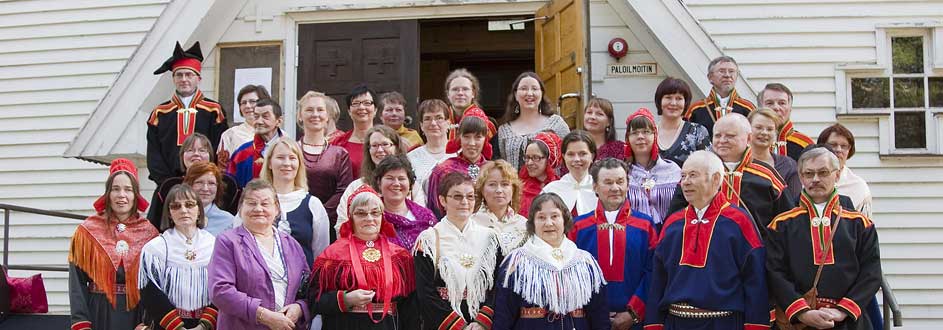Cultural Courses |
||
|
Students participated in the cultural activities as a group. They were able to become familiar with the cultural surroundings where the language has been preserved and transmitted from generation to generation. They also learned in practice something of the traditional ways of Saami living –knowledge that could not be learned in the classroom. Course: Fishing I - Net FishingContact Hours: 24 Description: Net Fishing - This course was in October, a few months into the program and included the whole CASLE group. The group spent time out on the lake as well as learning fishing-related texts and listening to old fishing stories on tape. All of the students cast nets and checked them again the next day. After collecting the fish they caught, the instructor, Anja Kaarret taught them to clean the fish. This course also represented a shift in the students language learning as they all made the decision to only communicate in Aanaar during this fishing trip. Course: Fishing II - Hook FishingContact Hours: 15 Description: Burbot Fishing - This course took place in February as the sun was shining brightly. The techniques used for Burbot fishing were not known to most of the students, so they spent the first day learning how to make a trap out of a stick, fishing line and hook, baited with a minnow. The students then drilled holes in the ice and put traps in close to the bottom of the lake, where the Burbot stay in wintertime. The students checked the traps the next day and were suspired how many Burbot they caught. The students then learned how to skin the Burbot and finished by making a delicious soup! Course: Fishing III - Ice FishingContact Hours: 14 Description: Winter Fishing - This course took place in March. The students were again successful with their catches and Anja again was instructing. There was a second instructor for this course, Anja’s uncle Aslak Saijets, who the students greatly enjoyed having around during the course. Aslak had been a professional fisherman since the age of 12 and knew all of the tricks of the lake. Course: Preparing Traditional MealsContact Hours: 27 + Optional one-day programme Description: Preparing traditional Saami meals- The actual cooking course took place in late spring, but the optional one-day excursion to a reindeer roundup took place first in the previous autumn. This optional excursion was attended by almost all of the students. During this reindeer roundup the students separated the intestines of the reindeer and gathered reindeer blood in buckets to be used for making reindeer sausages. The cooking course was instructed by Elsa Väisänen, who planned four days of traditional Aanaar dishes for the students to prepare. These dishes included reindeer sausages and pudding cakes, boiled whitefish and potatoes, sautéed reindeer, and a soup made of reindeer hooves. This course was enjoyed by all the students, who not only learned how to prepare traditional meals, but also received lessons about history and stories behind the food they were eating. Course: Media CourseContact Hours: 53 Description: Editing the community newspapers Anarâš and Kierâš; Writing AS documents. This course was developed because media is one of the main forms of modern Aanaar culture. This course took place in June and July and the instructor, Petter, has been involved in other media courses and established the Aanaar online magazine, Kierâš. The idea of the course was to give an overview of both magazine and filmmaking. The students worked in pairs and some made short documentaries, another group wrote, edited, and compiled a weekly edition of Kierâš, one group created an issue of the Anarâš magazine, and the last group made a music video of one of their songs. Some students have continued to contribute to Kierâš and Anarâš and some students have continued to document the language and its remaining mother-tongue speakers through film. |
||
CASLE
.fi Revitalising Indigenous Languages
C
omplementary
A
anaar
S
aami
L
anguage
E
ducation


